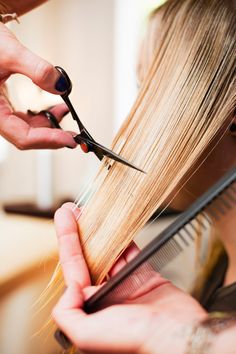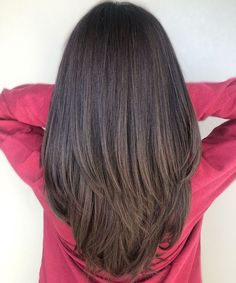Hair Cutting I
Welcome to “The Art of Hair Cutting,” where we embark on a journey into the fascinating world of hairstyling. Hair cutting is not just a skill; it’s an art form that requires precision, creativity, and an understanding of anatomy and aesthetics. In this class, we’ll explore the fundamentals of hair cutting, from basic techniques to advanced principles, empowering you to unleash your creativity and master the craft of transforming hair into works of art.
Chapter 1: Understanding Hair Cutting
1.1 The Importance of Hair Cutting: Hair cutting is more than just trimming hair; it’s about sculpting and shaping hair to enhance facial features, express individuality, and create a desired look. A well-executed hair cut can boost confidence, elevate style, and transform a person’s appearance.

1.2 Basic Anatomy of Hair: To become proficient in hair cutting, it’s essential to understand the basic anatomy of hair. Hair is composed of three main layers: the cuticle, cortex, and medulla. Each layer plays a role in determining hair texture, strength, and elasticity.
1.3 Hair Growth Patterns: Every individual has unique hair growth patterns, including hair density, texture, and natural fall. Understanding these patterns is crucial for tailoring hair cuts to suit each client’s specific needs and preferences.
Chapter 2: Essential Tools and Equipment
2.1 Hair Cutting Shears: Hair cutting shears are the most important tool in a hairstylist’s arsenal. Choose high-quality shears with sharp blades and ergonomic handles for precision cutting and comfort.
2.2 Comb and Clips: A fine-tooth comb and hair clips are essential for sectioning hair and ensuring clean, even cuts. Invest in professional-grade combs and clips that are durable and easy to use.
2.3 Hair Cutting Cape: A hair cutting cape protects clients’ clothing from hair clippings and ensures a professional, salon-like experience. Choose capes made from lightweight, waterproof materials for easy cleaning and durability.
Chapter 3: Basic Hair Cutting Techniques
3.1 Sectioning: Before beginning a hair cut, it’s crucial to section the hair properly to ensure even distribution and precise cutting. Divide the hair into sections using clips and combing techniques, taking into account the client’s hair texture and desired style.

3.2 Cutting Techniques: There are several cutting techniques used in hair cutting, including:
- Point Cutting: This technique involves cutting the hair at an angle with the tips of the shears, resulting in soft, textured ends.
- Blunt Cutting: Blunt cutting creates a clean, straight line and is often used for creating sharp, geometric shapes.
- Slide Cutting: Slide cutting involves gently opening and closing the shears while moving along the length of the hair, resulting in subtle layers and texture.
3.3 Texturizing and Thinning: Texturizing and thinning techniques are used to remove bulk and add movement to the hair. Common texturizing techniques include slicing, notching, and razor cutting, each producing unique effects depending on the desired outcome.
Chapter 4: Advanced Hair Cutting Principles
4.1 Face Shape Analysis: Understanding the client’s face shape is essential for creating a hair cut that complements their features and enhances their natural beauty. Common face shapes include oval, round, square, heart, and diamond, each requiring different cutting techniques to achieve the desired look.
4.2 Layering and Graduation: Layering and graduation are advanced cutting techniques used to add volume, texture, and movement to the hair. Layering involves cutting the hair at different lengths to create dimension and depth, while graduation involves cutting the hair at an angle to create a graduated effect.
4.3 Creative Styling: Creativity is key in hair cutting, allowing hairstylists to experiment with different techniques, textures, and styles to create unique and personalized looks for their clients. Whether it’s creating edgy asymmetrical cuts, romantic layers, or bold pixie cuts, the possibilities are endless when it comes to creative hair cutting.

Chapter 5: Client Consultation and Communication
5.1 Understanding Client Needs: Effective communication is essential in hair cutting, as it allows hairstylists to understand their clients’ needs, preferences, and lifestyle. Take the time to listen to your clients’ concerns, ask probing questions, and offer expert advice and recommendations based on their individual hair type and face shape.
5.2 Managing Expectations: Managing client expectations is crucial in hair cutting, as it helps prevent misunderstandings and ensures client satisfaction. Be honest and transparent about what can be achieved with their hair type, texture, and length, and offer realistic recommendations based on your expertise and experience.
Conclusion:

Congratulations on completing “The Art of Hair Cutting!” Armed with the knowledge, techniques, and principles learned in this class, you’re well-equipped to embark on your journey to becoming a skilled and confident hairstylist. Whether you’re working in a salon, pursuing freelance opportunities, or simply honing your skills for personal enrichment, may your passion for hair cutting continue to inspire creativity and innovation in all your future endeavors.

